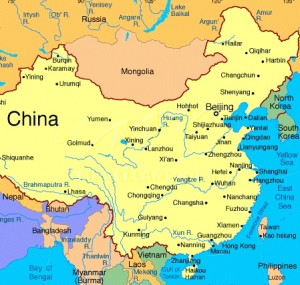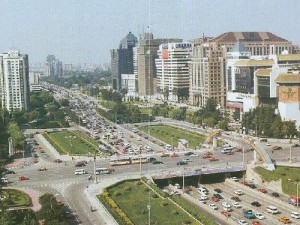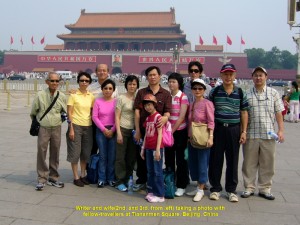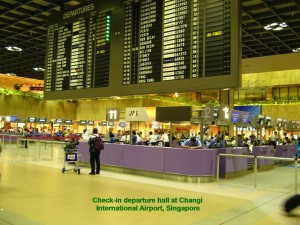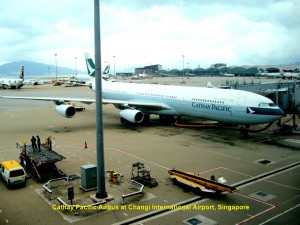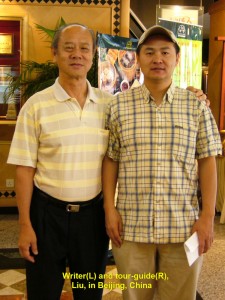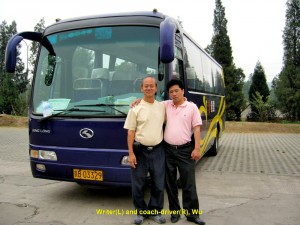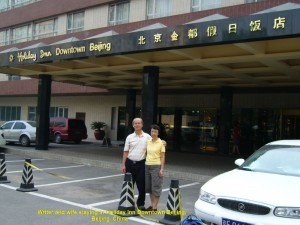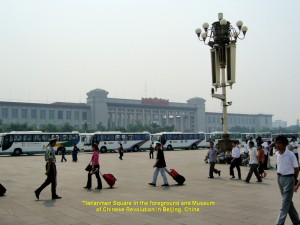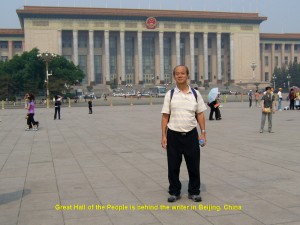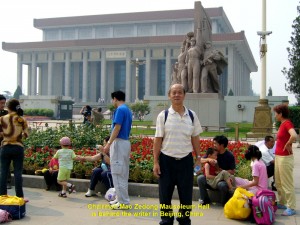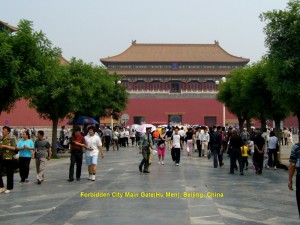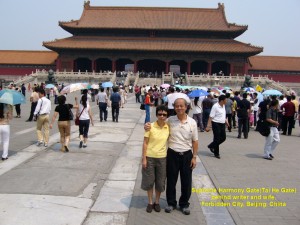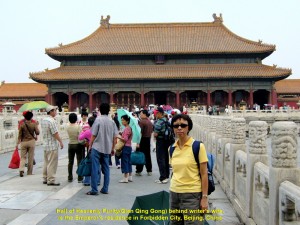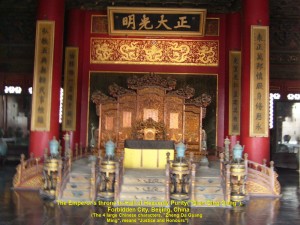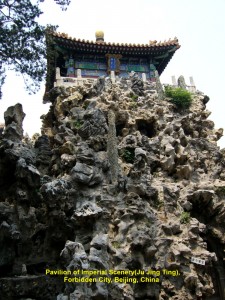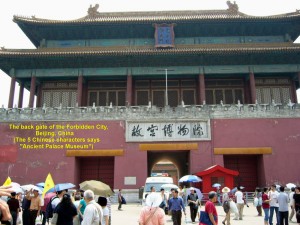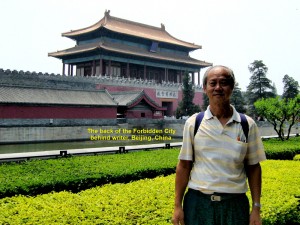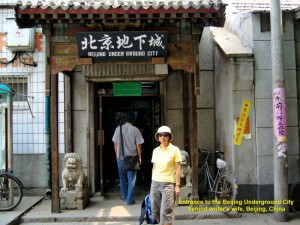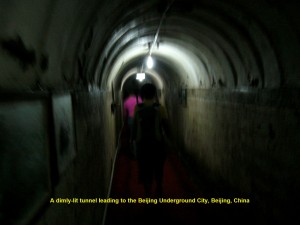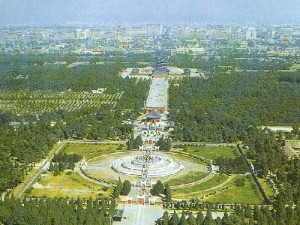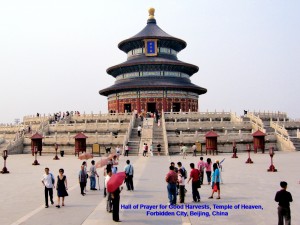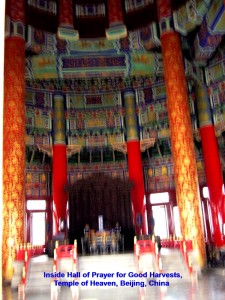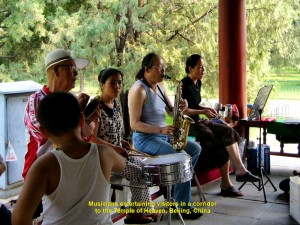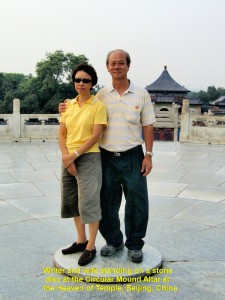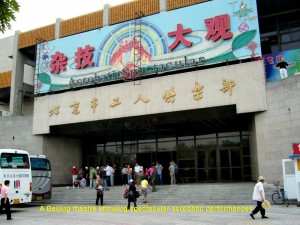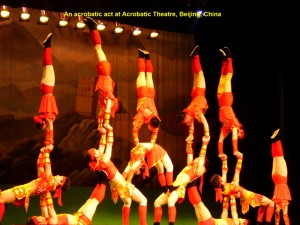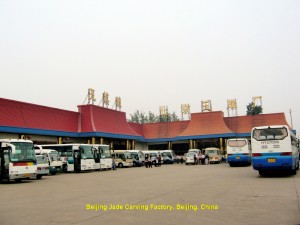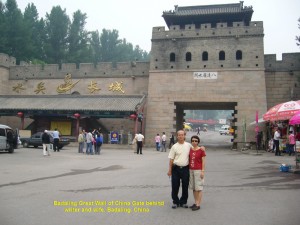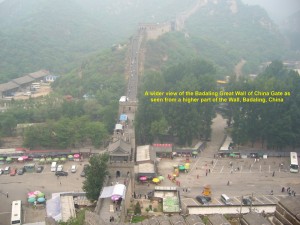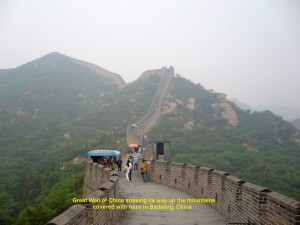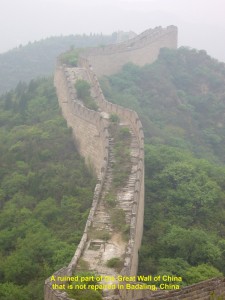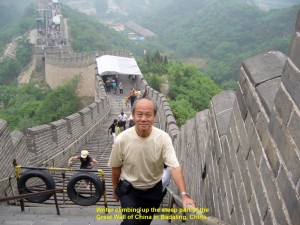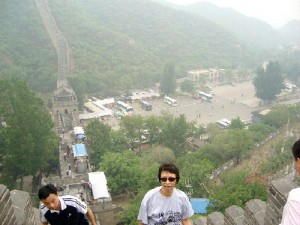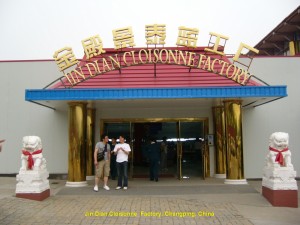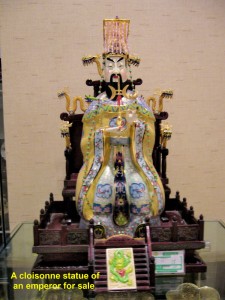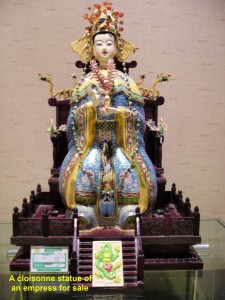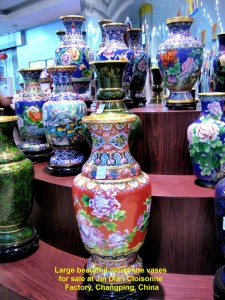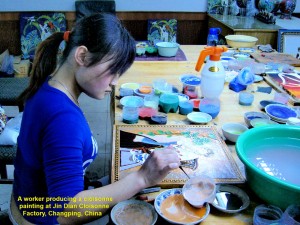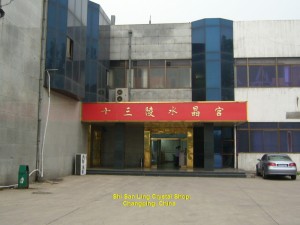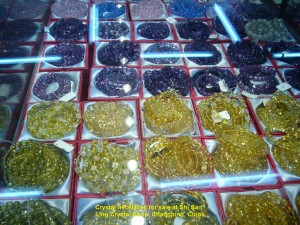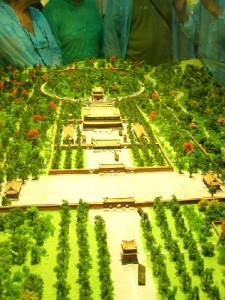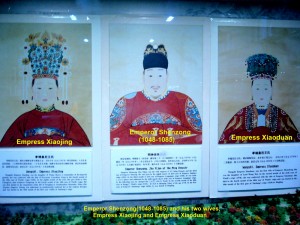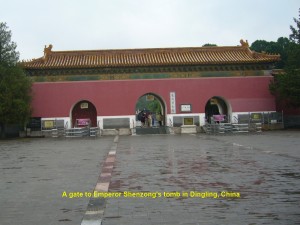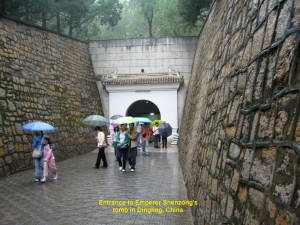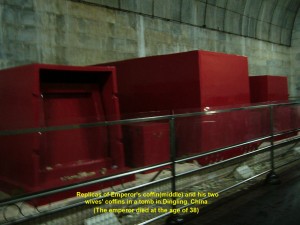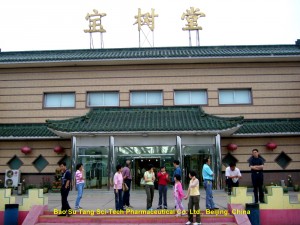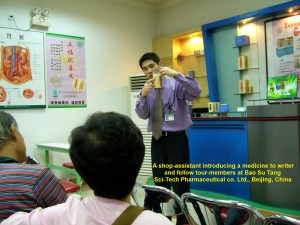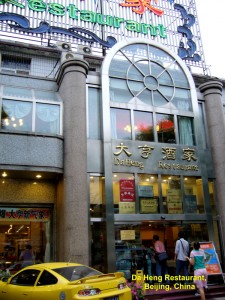Beijing, Tianjin, Chengde Travel (Part I)
Beijing, Tianjin, Chengde Travel (Part I)
Beijing City
Beijing is the capital of the People’s Republic of China with a large population of 12 million. Located in north-east China, it has a history of 3,000 years and was a capital for six dynasties. Among the dynasties were Jin (1115 – 1234), Yuan (1271 – 1368), Ming (1368 -1644) and Qing (1644 – 1911). They left behind countless historical and cultural sites which are now tourists’ attractions. Beijing is an ideal place to learn about the Chinese ancient imperial past.
Rise in Standard of Living Since China opened its door to foreign investors in the 1980’s, her economy has been growing fast. As a result, wealth has been created and the standard of living of her people has been raised. Now her people can afford to drive expensive cars of local and foreign made, like Toyot
Honda, Mazda, Volvo, etc. Besides, her people can afford to live in high-rise apartments, shop at foreign departmental stores like Carrefour, Giant and Parkson, eat at fast food outlets like Macdonald’s, Pizza Hut and Kentucky Fried Chicken, tour overseas, etc.
The last time I went to China was in June 2005. I went there to see the fast growing economy of Shenzhen City, the beautiful karst landscape near Hezhou City and the spectacular scenery of limestone hills of Quilin City.
From 31 May 2006 to 7 June 2006, I went to China to visit Beijing, Tianjin and Chengde in north-east China and learn their rich histories and cultures.
Below is the itinerary of my travel to some tourist places in China:
Day 1 Air Travel to Beijing City
Day 2 Tiananmen Square,
Forbidden City,
Beijing Underground City
Temple of Heaven
Day 3 Great Wall of China,
Cloisonne Factory
Ming Tombs
Day 4 Beijing Zoo
Summer Palace
Jubao Tang Jewellery Centre
Day 5 Ming City Site Park and Tianjin City
Day 6 Bei Hai Park
Day 7 Mountain Summer Resort of Chengde
Puning Temple
Ya Show Clothing Market
Day 8 Travel Back Air Travel to Beijing
Day 1: Wednesday, 31 May 2006 Air Travel to Beijing City
On the morning of first day of my travel, my wife and I joined eight tourists from my country, Malaysia, and went together with our travel agent to Changi International Airport in Singapore. Then we took a Cathay Pacific Airbus to Hong Kong. On arrival at Hong Kong International Airport, we disembarked and boarded another Cathay Pacific Airbus to continue our journey to our destination, Beijing. We were glad that both flights were smooth.
Chinese Tour Guide and Coach Driver When we arrived at Beijing International Airport in the evening, a young local tour-guide, Mr. Liu. greeted us. Then a coach driven by a local man, Mr. Wu, brought all of us straight to
a brightly-lit Chinese restaurant in the city to taste some Beijing food. As we were very hungry after a long journey we gobbled up the food quickly without any thought for its taste.
Holiday Inn Downtown Beijing After dinner we checked in at a four-star hotel known as Holiday Inn Downtown Beijing. Having taken a shower at the hotel, my wife and I went out and took a walk in a busy street nearby. As we were strolling in the street, we were surprised to see many street-vendors selling pirated VCD’s and DVD’s of the latest American movies such as The Da Vinci Code, X-Men: The Last Stand, The Omen and The Benchwarmers. Later, when we walked back to our hotel, we were surprised to see those vendors standing around without their pirated goods anymore. We guessed some copyright enforcement officers had made their appearance.
Day 2: Thursday, 1 June 2005 Tiananmen Square
After breakfast we headed straight for the largest public square in the world, Tiananmen Square or Gate of Heavenly Peace Square, which is located in the centre of Beijing City.
On the way to the place, we noticed that the quality of the air in the city was poor. The whole city was shrouded in haze and we were worried that the haze would spoil the sceneries of the tourists’ spots in Beijing and other places.
Air Pollution According to Beijing Environment Protection Bureau, air pollution has been a perennial problem in the city. It claims that about 23 % of the city’s pollution is caused by more than 2.6 million vehicles in the streets and the number is growing.
Tiananmen Square Tiananmen Square covers an area of 440,000 sq. metres and can accommodate a million people. It has a political and historical significance to the nation. Many national celebrations and military reviews are held here.
Standing in the centre of the square, one can see the prominent red Tiananmen Gate in the north, both Museum of Chinese History and Museum of Chinese Revolution in the east, Chairman Mao Zedong Mausoleum in the south and Great Hall of the People in the west. In the centre of the square, Monument to the People and Heroes is erected. A large five-star flag, China’s national flag, can be seen flying on a tall staff in the square. It is raised at dawn and lowered at sunset daily.
When we arrived at the Square it was already crowded with both domestic and foreign tourists. Many tour buses could be seen at the Square and countless bicycles near Tiananmen Gate. In tha square there were many peddlers approaching us and other tourists with their goods like kites, maps, postcards and souvenirs.
Chairman Mao Zedong
After snapping a few photos in the Square, we walked to Tiananmen Gate or Gate of Heavenly Peace and saw a large, brightly coloured and almost life-liked portrait of Chairman Mao Zedong hanging high on the Gate.
Chairman Mao was the Chinese communist leader who gained control of China in 1949 from Chinese Nationalist Party (Kuomintang). The latter was forced to retreat to Taiwan Island.
Our tour-guide pointing at the picture of Chairman Mao said, “That portrait is painted by a Chinese professor. He will paint one to replace the old one every year.”
Tiananmen Gate
Tiananmen Gate was built in 1417. It is 3.37 metres high and has a terrace and a tower where one can have a panoramic view of Tiananmen Square. Behind this large Gate is Forbidden City which was the imperial palace of the Ming and Qing Dynasties.
Forbidden City
Forbidden City is the largest and well-preserved palace of ancient wooden architecture in the world. It had been an imperial residence for 24 emperors of the Ming (1368-1644) and Qing (1644-1911) dynasties. It was also a place where the emperors handled the state affairs.
Built in 1406, the 4th. year of the Ming Emperor Yongle’s reign and completed in 1420, it covers an area of 720,000 sq. metres and has 8,707 rooms. It was inaccessible to ordinary people during the emperors’ reigns. In 1925, it was open to public and renamed as “Palace Museum”.
Forbidden City now houses a large collection of fine treasures and about 1 million relics such as arts and crafts, jewelleries, bronze objects, ceramic objects, ancient clocks, furniture, watches and ancient paintings. In 1987, UNESCO designated the place as a World Cultural Heritage.
Tthe Outer Imperial Palace During the emperors’ rule, political activities were held in Hall of Supreme Harmony (Tai He Dian), Hall of Central Harmony (Zhong He Dian) and Hall of Preserved Harmony (Bao He Dian) which are in the outer imperial palace.
Among the three Halls, Hall of Supreme Harmony was the most important one as it was the place where grand ceremonies were held, such as the accession of a new emperor to the throne, the adoption of a new title of a reign, going on an expedition, the emperors’ birthday celebrations, wedding ceremonies and the celebration of the Spring Festival.
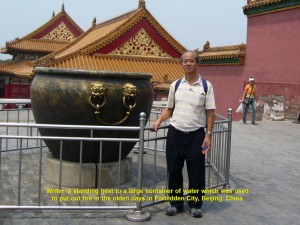
Writer standing next to a large container of water used for putting out fire in Forbidden City, Beijing
The Inner Imperial Palace
The inner palace consists of Hall of Heavenly Purity (Qian Qing Gong), Hall of Union and Peace (Jiao Tai Dian) and Hall of Earthly Tranquility (Kun Ning Gong) where the emperor and his empress resided and handled their daily affairs.
The Imperial Garden
The emperor’s consorts lived in the other six buildings in the east and west of the palace. Located at the back of the palace is the Imperial Garden. In this garden one can see two cypress trees with their branches interlocked symbolizing eternal love. It is said that Puyi and Wanrong, the last emperor and empress of the Qing Dynasty, respectively, had their photo taken in front of the trees after their wedding ceremony and both vowed that “We wish to fly in heaven, two birds with one pair of wings, and to grow together on earth, two trees with branches interlaced.”
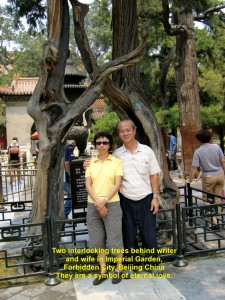
Two interlocking trees(symbol of eternal love) are behind the writer and wife in the Imperial Garden, Forbidden City, Beijing
Pavilion of Imperial Scenery
In the Imperial Garden, stands an artificial hill of rocks which is ten metres high and has a pavilion on its top. It is known as Pavilion of Imperial Scenery (Ju Jing Ting). During the 9th. festival every year, the emperors, empresses and imperial concubines walked up a path to the pavilion to enjoy the surrounding picturesque scenery.
We spent about three hours touring Forbidden City and were all the time being awestruck by its large courtyards and beautiful quaint wooden buildings.
Beijing Underground City
After lunch, we went to a strange place known as Beijing Underground City. This ‘city’ is under a place where old buildings still exist. It has many interconnected underground tunnels. According to our tour guide, the total length of the tunnels is longer than the length of the Great Wall of China. There is a tunnel which runs all the way to Tianjin City. It was supposed to be an escape route for Communist leaders in the event of an attack on Beijing by a foreign country, especially the Russians then.
Underground Bomb-Shelters
When Chairman Mao Zedong had a conflict with Soviet Russia, he ordered underground bomb-shelters to be built in Beijing. Those shelters could accommodate 40% of the population of Beijing and the rest would have to hide in the nearby hills in the event of a Soviet air raid or land attack. The shelters had facilities which included schools, hospitals, theatres, living quarters, factories and stores for arsenal and food. It took twelve years (1967-1979) to complete building the so-called Beijing Underground City.
Qianmen District
To see the ‘underground city, we went to Qianmen District in Beijing and took a short walk along a dirty, dusty and narrow lane to a shop front with a signboard which says “Beijing Underground City” in English and Chinese. The shop front is an entrance to the ‘underground city’.
Dimly-Lit Tunnels
After paying a fee at the entrance, we followed a young guide in a soldier uniform. He brought us round in some of the dimly-lit tunnels which are 8-10 metres below the ground. Each tunnel is about 2.5 metres high and its lower part is between 1.5 and 2 metres wide. It is very cooling but damp inside with a temperature of about 15 degrees Celsius. We had to walk carefully when we came across wet and slippery floor in the tunnel. When we asked the guide about the air-ventilation in the tunnels, he brought us to a place and pointed at a long shaft that went up to the open air outside and could be closed to prevent poisonous gas from entering in the event of an air-raid on Beijing.
Bomb-Shelter Facilities
The guide also showed us an arsenal store, a reading room, a communication room and first aid room. As we were walking behind the guide, we saw old, dirty and blurred black and white pictures of the China Communist military activities of the olden days hanging on the walls of the tunnels. Finally, he brought us to an underground quilt factory where one of our tour members bought a quilt for herself.
Nowadays, many bomb-shelters in Beijing have been converted into shops, theatres, youth hostels, and markets.
Temple of Heaven
After visiting Beijing Underground City, we went south to visit the Temple of Heaven complex. It covers a large area of 2.7 million sq. metres and is the largest temple complex in China. There are 4 main parts of this area: Circular Mound Altar (Yuanqiutan), Echo Wall, Imperial Vault of Heaven (Huangqiongyu) and Hall of Prayer for Good Harvests (Qiniandian). In 1998, UNESCO listed Temple of Heaven as a World Cultural Heritage.
Hall of Prayer for Good Harvests
The most beautiful building in this area is Hall of Prayer for Good Harvests which is a majestic and magnificent ancient temple. It is circular in shape and has three eaves. Its architectural structure is unique. It was built between 1406 and 1420 during the reign of the Ming Emperor Yongle. In this temple, emperors of the Ming and Qing Dynasties offered sacrifices to Heaven and prayed for rain and good harvests.
Inside the temple there are 4 columns in the inner ring that represent 4 seasons, 12 columns in the middle ring that represent 12 months and 12 columns in the outer ring that represent 12 Shichen which is one day. 1 Shichen is equivalent to 2 hours.
Covered Corridor Leading to this stunning temple is a long covered
corridor of 360 metres. While we were walking along this corridor, we were amused to see people involving themselves in a variety of activities such as playing card games, playing Chinese chess, selling souvenirs, singing Chinese folk songs to the accompaniment of ancient musical instruments, drawing, etc.
When we reached Hall of of Prayer for Good Harvests, we looked at it with awe. It is a large, beautiful temple. It looked as though it was new then as it had a new coat of paint. On its wall outside, we were amazed to see thousands of small pictures and intricate designs drawn.
Imperial Vault of Heaven Imperial Vault of Heaven is surrounded by a circular wall known as Echo Wall. If a person whispers close to the latter at any point, his voice can be heard clearly at any other point by another person.
Circular Mound Altar Circular Mound Altar was built in 1530 during the reign of Emperor Jiajing of the Ming Dynasty. It was a place for worshipping Heaven in Winter Solstice, annually. It has 3 layered marble terraces. If a person stands on the Heavenly Centre stone, his voice will sound resonant and sonorous.
Strolling in the Temple of Heaven is quite an awesome experience for me. It was a sacred place for the emperors to worship Heaven which they believed would grant them their wishes.
Acrobatic Show In the evening we went to a Beijing theatre, Spectacular Acrobatic Theatre, and spent an hour watching young men and women performing spectacular acrobatic acts. One of the acts that amazed me was a young man in a horizontal position and being supported by 4 spears. He was a Shaolin disciple.
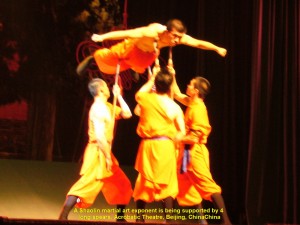
A Shaolin martial art exponent being supported by 4 long spears at Spectacular Acrobatic Theatre, Beijing
Day 3: Friday 2 June 2006 Badaling Great Wall of China
The Great Wall of China After breakfast, we travelled 67 km north of Beijing to Badaling to climb one of the seven wonders of the world, Great Wall of China. In ancient times, it was an important fortress to many kingdoms. According to a Chinese saying, “He who has never been to the Great Wall is not a true man.”
The Great Wall of China was first built in the 7th. Century B.C. by independent kingdoms to keep out the Mongolian invaders in the north. Later, the first emperor of China, Qin Shi Huang, linked many of these walls to protect the northern borders of the states of Qin, Yan and Chao. Subsequently, more walls were built by other emperors. The Great Wall of China now stretches for more than 6,000 km from east to west.
Beijing Jade Carving Factory On the way to Badaling, we
stopped at Beijing Jade Carving Factory. After watching how jade products were painstakingly carved and looking at a variety of readily-made ones which were for sale at the factory, we continued our journey to Badaling in the mountainous region.
The Badaling Great Wall of China When we arrived at Badaling, we were awestriuck to see for the first time in our lives the Great Wall
of China which we had heard so much. It is a brilliant human feat to build such a spectacular long wall of bricks and mortar. It looks like a serpent with a long, slender body moving up and down the mountains. Astronauts claimed that they could see the “serpent” on a clear day from their spacecrafts.
The Great Wall of China at Badaling was built during the Ming Dynasty. It is 7.8m high, 6.5 m thick at the bottom and 5.8 m wide on the top. Five horses or ten people can walk on it abreast. On its top, there are ramparts, embrasures, peep-holes and apertures for archers. Watch-towers for accommodation, storing military equipment and observing enemies’ movements were built at 500 metre intervals.
Climbing the Great Wall
Standing in front of the large Great Wall gate, we noticed that the gradient of the wall on our left was gentle whereas the other one on our right was steep. We all decided to climb the one on our left.
While walking on the wall, we met many tourists from different parts of the world. The wall here was well restored and preserved. Steps were made on steep parts of the wall so that tourists could climb easily. Sometimes, we stopped to see the spectacular, awe-inspiring scenery of the mountains and the long Great Wall.
Stalls on the Wall There were stalls on the Wall selling souvenirs, T-shirts with pictures of the Great Wall and drinks. There were a few other stalls inviting tourists to have their photos taken with their camels or in ancient Chinese clothes for a small fee.
Wall in Disrepair
After walking on the wall for more than a kilometre, we came across a notice that told us not to continue beyond that point. Out of curiosity, I looked beyond it and saw the rest of the Great Wall in bad conditions. Grass and small plants could be seen growing on the ruined wall. So we turned back.
The Steep Climb
When we reached the foot of the mountain, I decided to climb the steeper one. Although it was an arduous climb for me, I was glad that I could make it to the top and felt I was a “true man”.
At 12.30 p.m. we left the Badaling Great Wall for Changping.
Jin Dian Cloisonne Factory, Changping
At Changping which is north-east of Beijing City, we visited a factory known as Jin Dian Cloisonne Factory which manufactured cloisonne products.
Cloisonne is a unique Chinese art. It was originated during the reign of Jintai of Yuan Dynasty. It involves elaborate and complicated processes such as designing, base-hammering, copper-strips in-laying, enamel-filling, enamel-firing, polishing and grilling.
After watching some workers doing the interesting Chinese art and browsing some cloisonne products, we proceeded to a restaurant which is adjacent to the factory for a sumptuous Chinese lunch.
Shi San Ling Crystal Shop We then left the restaurant for
another factory nearby and it is known as Shi San Ling Crystal Shop. It sells crystal products, like spectacles, jewellery, globes and figurines. After spending an hour at the shop, we left for a well-known tourist spot, the Ming Tombs.
The Ming Tombs
The Ming Tombs or the Underground Palace was a burial ground for 13 of the 17 emperors of the Ming Dynasty located in a wide valley of 40 sq. km. to the south of Tianshou Mountain in Changping District, 50 km north-west of Beijing.
Emperor Yongle was the first Ming Emperor to be buried there. So far three tombs, Changling, Dingling and Shaoling have been excavated and Dingling is the only tomb that is open to public.
Dingling was a burial ground for Emperor Shenzong. In the vaulted stone chambers which are about 27 metres below the ground surface, the archaeologists found more than 3,000 artifacts.
When we arrived at the Ming Tombs in the late afternoon, we walked straight to Dingling, where the coffins of Emperor Shenzong and his two wives were found.
When we reached Dingling, we walked down several flights of steps, and went through a short tunnel, the front chamber, the middle chamber and finally to the rear chamber which is 27 metres below the ground.
Box-Like Coffins In the poorly-lit rear chamber, we saw three red, large box-like coffins lying side by side. The middle one which is the biggest belonged to Emperor Shenzong (who died at the age of 58 in 1620) and the other two his wives, Empress Xiaoduan (his first wife) and Empress Xiaojing (his second). We were told that the present coffins are replicas as the original ones were already rotten. Near thr coffins, there were some small boxes containing their belongings. In the middle chamber, there were many displayed cultural artifacts.
We were aware all the time that the underground chambers were poorly-lit. But we were glad that there were many tourists around then, otherwise a few of us would have a cold feeling there.
Bao Su Tang Su-Tech Pharmaceutical Co. Ltd.
In the evening, we gladly left the Ming Tombs and went straight to a pharmaceutical shop known as Bao Su Tang Su-Tech Pharmaceutical Co. Ltd.
When we arrived there, we were invited to a small room where a young and smartly dressed man introduced to us many types of Chinese. He
told us that he would do a demonstration first to prove that Baofuling was an effective cream for treating scorched skin. Before he went for the red hot iron-chain in a corner, we quickly stopped him as we had seen that kind of painful demonstration before in Quilin. He obliged and continued to talk about the usefulness of other types of medicine.
After listening to the talk, a few of us bought some. Then we left the shop for a Chinese restaurant, Da Heng Restaurant, in Beijing City for dinner.
(To continue reading this travelogue, please go to Beijing, Tianjin, Chengde Travel Part II)
Comments
One Comment on Beijing, Tianjin, Chengde Travel (Part I)
-
Ong Eng Chong on
Mon, 27th Jan 2014 10:06 pm
Very informative & well presented with illustrations.
Tell me what you're thinking...
and oh, if you want a pic to show with your comment, go get a gravatar!

